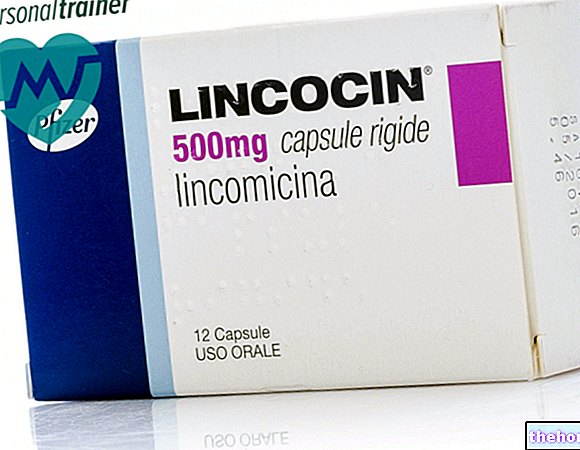Active ingredients: Hydrocortisone (hydrocortisone acetate)
Lenirit® 0.5% Cream
Indications Why is Lenirit used? What is it for?
PHARMACOTHERAPEUTIC CATEGORY
LENIRIT® is a dermatological cream whose active principle is hydrocortisone acetate, a well-known drug with anti-inflammatory activity. The low dosage together with the non-irritating excipients and at the same time favoring a good delivery of the product, make LENIRIT® an excellent remedy in treatment of minor skin irritations such as: itching, redness due to eczema, insect bites, contact dermatitis due to cosmetics, soaps and detergents in general.
THERAPEUTIC INDICATIONS
Insect bites, itching, localized rashes or burns, eczema.
Contraindications When Lenirit should not be used
Contraindicated in case of ascertained hypersensitivity to hydrocortisone acetate, the use of hydrocortisone is contraindicated in the case of viral, bacterial and fungal diseases.
Precautions for use What you need to know before taking Lenirit
For external use only. The cream is not used ophthalmologically, it should be applied in the periocular areas. Avoid prolonged applications, especially on large surfaces.
Interactions Which drugs or foods can modify the effect of Lenirit
None known.
Warnings It is important to know that:
If conditions worsen or if symptoms persist for more than 7 days, discontinue applications and consult a doctor. Do not use in children under two years of age and pregnant, except on the advice and supervision of a doctor. Do not use in the treatment of vulvar itching, if associated with vaginal discharge.
Dose, Method and Time of Administration How to use Lenirit: Posology
Rubbing lightly, spread the cream on the affected part in a thin layer, twice a day.
Do not exceed the recommended dose.
Side Effects What are the side effects of Lenirit
The use, especially if prolonged, of products for topical use can give rise to phenomena of irritation or sensitization. In this case it is necessary to stop the treatment and consult a doctor in order to establish a suitable therapy.
In any case, it is advisable to report any undesirable effect that may occur during the course of treatment to the treating doctor or pharmacist.
Expiry and Retention
Do not use the medicine after the expiry date indicated on the package. Remember that the expiry date refers to the product in intact packaging, correctly stored at room temperature.
Other information
COMPOSITION
100 g of LENIRIT contain:
Active ingredient: Hydrocortisone acetate 0.5 g.
Excipients Polyglycolic ester of C12-C18 fatty acids, self-emulsifying glyceryl monodistearate, squalane, cetyl palmitate, methyl p-hydroxybenzoate, ethyl p-hydroxybenzoate, propyl p-hydroxybenzoate, perfume, purified water FU.
PHARMACEUTICAL FORM AND PACKAGING
Cream for dermatological use in a deformable aluminum tube, entirely coated with heraldite, of 20 g.
Source Package Leaflet: AIFA (Italian Medicines Agency). Content published in January 2016. The information present may not be up-to-date.
To have access to the most up-to-date version, it is advisable to access the AIFA (Italian Medicines Agency) website. Disclaimer and useful information.
Further information on Lenirit can be found in the "Summary of Characteristics" tab. 01.0 NAME OF THE MEDICINAL PRODUCT 02.0 QUALITATIVE AND QUANTITATIVE COMPOSITION 03.0 PHARMACEUTICAL FORM 04.0 CLINICAL PARTICULARS 04.1 Therapeutic indications 04.2 Posology and method of administration 04.3 Contraindications 04.4 Special warnings and appropriate precautions for use 04.5 Interactions with other medicinal products and other forms of interaction04.6 Pregnancy and lactation04.7 Effects on ability to drive and use machines04.8 Undesirable effects04.9 Overdose05.0 PHARMACOLOGICAL PROPERTIES05.1 Pharmacodynamic properties05.2 Pharmacokinetic properties05.3 Preclinical safety data06.0 INFORMATION PHARMACEUTICALS 06.1 Excipients 06.2 Incompatibilities 06.3 Shelf life 06.4 Special precautions for storage 06.5 Nature of the immediate packaging and contents of the package 06.6 Instructions for use and handling 07.0 MARKETING AUTHORIZATION HOLDER08 .0 MARKETING AUTHORIZATION NUMBER 09.0 DATE OF FIRST AUTHORIZATION OR RENEWAL OF THE AUTHORIZATION 10.0 DATE OF REVISION OF THE TEXT 11.0 FOR RADIOPharmaceuticals, FULL DATA ON INTERNAL RADIATION DOSIMETRY 12.0 FOR RADIO DRUGS, ADDITIONAL DETAILED INSTRUCTIONS ON ESTEMPORANEA PREPARATION AND CONTROL
01.0 NAME OF THE MEDICINAL PRODUCT
LENIRIT 0.5% CREAM
02.0 QUALITATIVE AND QUANTITATIVE COMPOSITION
100 g of cream contain:
Active ingredient: 0.5 g hydrocortisone acetate.
Excipients with known effects: methyl parahydroxybenzoate; ethyl parahydroxybenzoate; propyl parahydroxybenzoate.
For the full list of excipients, see section 6.1.
03.0 PHARMACEUTICAL FORM
Cream.
04.0 CLINICAL INFORMATION
04.1 Therapeutic indications
Insect bites, itching, localized rashes or burns, eczema.
04.2 Posology and method of administration
Rubbing lightly, spread the cream on the affected part in a thin layer, twice a day. Do not exceed the recommended dose.
LENIRIT should not be used in children less than two years of age (see section 4.3).
04.3 Contraindications
Known hypersensitivity to the active substance or to any of the excipients listed in section 6.1.
Infections and skin diseases: tuberculosis, pyoderma, mycosis, as well as skin ulcers and wounds, skin cancers.
The use of the cream is contraindicated on the skin of the face, on the anogenital area, on large lesions, infectious diseases (syphilis), viral infectious diseases (such as herpes, chicken pox), perioral dermatitis, acne, acne rosacea, skin reactions after a vaccination , pustular psoriasis.
Lenirit should not be used in infants and children under 2 years of age.
04.4 Special warnings and appropriate precautions for use
If conditions worsen or if symptoms persist for more than 7 days, discontinue applications and consult a doctor. Avoid contact with eyes.
The use, especially if prolonged, of topical medicines can give rise to phenomena of irritation or sensitization. In this case it is necessary to interrupt the treatment and institute a suitable therapy.
Prolonged use of this medicine can cause telangiectasia and skin atrophy.
When used for a long time, or on a large area of skin, hydrocortisone can be absorbed into the blood and exert systemic activity. This is more likely to occur if occlusive dressing is used; the diaper can act as a bandage Systemic absorption of topical corticosteroids can lead to reversible suppression of the hypothalamic-pituitary-adrenal axis with potential glucocorticosteroid insufficiency after discontinuation of treatment.
Following systemic absorption of topical corticosteroids, manifestations of Cushing's syndrome, glycosuria, hyperglycaemia may also occur in some patients during treatment. Patients applying a topical steroid over a large surface or in areas with occlusive dressing should be checked periodically to evaluate the suppression of the hypothalamic-pituitary-adrenal axis.
When used in the area adjacent to the eyes, appropriate precautions should be taken as penetration of the medicinal product into the eye may cause glaucoma or cataracts (see section 4.8). If this happens, the cream residue should be rinsed off with water. The cream contains ethyl parahydroxybenzoate, methyl parahydroxybenzoate and propyl parahydroxybenzoate which can cause allergic reactions (even delayed).
Pediatric population
Do not use in infants and children under 2 years of age (see section 4.3).
Particular caution is recommended when using the medicinal product in children due to the risk of systemic exposure to hydrocortisone.
Because the body surface area to body weight ratio in children is higher than in adults, children are more at risk of systemic corticosteroid effects, including hypothalamic-pituitary-adrenal axis suppression and Cushing's syndrome, than adults. L "Prolonged use of corticosteroids in children can cause growth and developmental disturbances. The duration of treatment should be as short as possible and the lowest dose should be used. The growth and development of the child should be monitored (see section 4.4).
Use in elderly patients
Elderly people may experience more pronounced side effects, especially in cases of co-morbidities, such as osteoporosis, hypertension, hypokalaemia, diabetes mellitus, in addition to greater susceptibility to infections and reduced skin thickness. These people must be carefully monitored to avoid the occurrence of life-threatening reactions.
In case of subcutaneous atrophic conditions, especially in the elderly, the medicinal product should be used with caution.
Use in patients with renal or hepatic insufficiency
In patients with hepatic disease or renal insufficiency special precautions should be taken for use and frequent clinical monitoring of health is required.
04.5 Interactions with other medicinal products and other forms of interaction
No cases of interaction and incompatibility with other medicinal products have been reported.
04.6 Pregnancy and breastfeeding
The use of Lenirit is not recommended during pregnancy and breastfeeding.
04.7 Effects on ability to drive and use machines
This medicine does not affect the ability to drive or use machines.
04.8 Undesirable effects
The use, especially if prolonged, of products for topical use can give rise to phenomena of irritation or sensitization. In this case it is necessary to interrupt the treatment and institute a suitable therapy.
Acne, steroid-induced purpura, dry skin, hypertrichosis, skin hypopigmentation, skin atrophy and striae, telangiectasia, perioral dermatitis, folliculitis, pruritus may occur during application of the cream. The increased absorption due to the use of an occlusive dressing, it can cause systemic effects such as edema, hypertension and impaired immune system; Suppression of the hypothalamic-pituitary-adrenal axis and Cushing's syndrome may also occur, particularly in pediatric patients. Prolonged use of corticosteroids in children can cause growth and developmental disturbances (see section 4.4).
Following topical application to the eyelid area, glaucoma or cataracts may occasionally occur (see section 4.4).
The incidence of adverse reactions is unknown.
Reporting of suspected adverse reactions
Reporting of suspected adverse reactions occurring after authorization of the medicinal product is important as it allows continuous monitoring of the benefit / risk balance of the medicinal product. Healthcare professionals are asked to report any suspected adverse reactions via the national reporting system. "address www.agenziafarmaco.gov.it/it/responsabili.
04.9 Overdose
Cases of overdose are not known with the topical use of hydrocortisone at the concentration contained in LENIRIT (0.5%), however, avoid prolonged applications, especially on large surfaces.
If high doses of the medicine are used on large areas of skin, under tight clothing or on damaged skin, the medicine may be absorbed into the blood and cause systemic corticosteroid effects (see section 4.4). In this case, a gradual suspension of treatment is recommended.
05.0 PHARMACOLOGICAL PROPERTIES
05.1 Pharmacodynamic properties
Pharmacotherapeutic group: corticosteroids, dermatological preparations.
ATC code: D07AA02.
Pharmacological properties
Hydrocortisone, like the other glucocorticoids, has an anti-inflammatory and anti-allergic action, with mechanisms still not fully understood. The theory according to which hydrocortisone stabilizes some membrane enzymes, thus preventing the conversion of their precursors to prostaglandins, seems now accepted. Of great importance is the topical use of corticosteroids and therefore of hydrocortisone acetate, which has revolutionized the therapy of dermatological diseases. The 0.5% dosage has been defined "safe and effective" by the F.D.A., Also in O.T.C. products, indicated in the treatment of minor skin disorders, identifiable by the same patient.
05.2 Pharmacokinetic properties
When used for a long time, or on a "large area of skin," hydrocortisone can be absorbed into the blood and exert systemic activity. This is more likely to occur when occlusive dressing is used (see sections 4.4 and 4.8). .
05.3 Preclinical safety data
Elements of toxicology
Acute toxicity studies have shown a low toxicity of hydrocortisone, administered orally in mice, rats, guinea pigs, cats. Subcutaneously the treatment for 21 days confirmed the very low level of toxicity, having only recorded toxic effects at higher dosages (2.4 g / kg).
06.0 PHARMACEUTICAL INFORMATION
06.1 Excipients
Polyglycol ester of C12-C18 fatty acids; self-emulsifying glyceryl monodistearate; squalane; cetyl palmitate; methyl parahydroxybenzoate; ethyl parahydroxybenzoate; propyl parahydroxybenzoate; scent; purified water.
06.2 Incompatibility
None.
06.3 Period of validity
3 years.
06.4 Special precautions for storage
This medicine does not require any special storage conditions.
06.5 Nature of the immediate packaging and contents of the package
Aluminum tube coated with protective epoxy resins equipped with a special plastic cap.
20 g tube of cream.
06.6 Instructions for use and handling
No precautionary instructions.
07.0 MARKETING AUTHORIZATION HOLDER
EG S.p.A. Via Pavia, 6 - 20136 Milan
08.0 MARKETING AUTHORIZATION NUMBER
AIC n ° 025869013
09.0 DATE OF FIRST AUTHORIZATION OR RENEWAL OF THE AUTHORIZATION
October 1986
Renewal: May 2005
10.0 DATE OF REVISION OF THE TEXT
November 2014




























